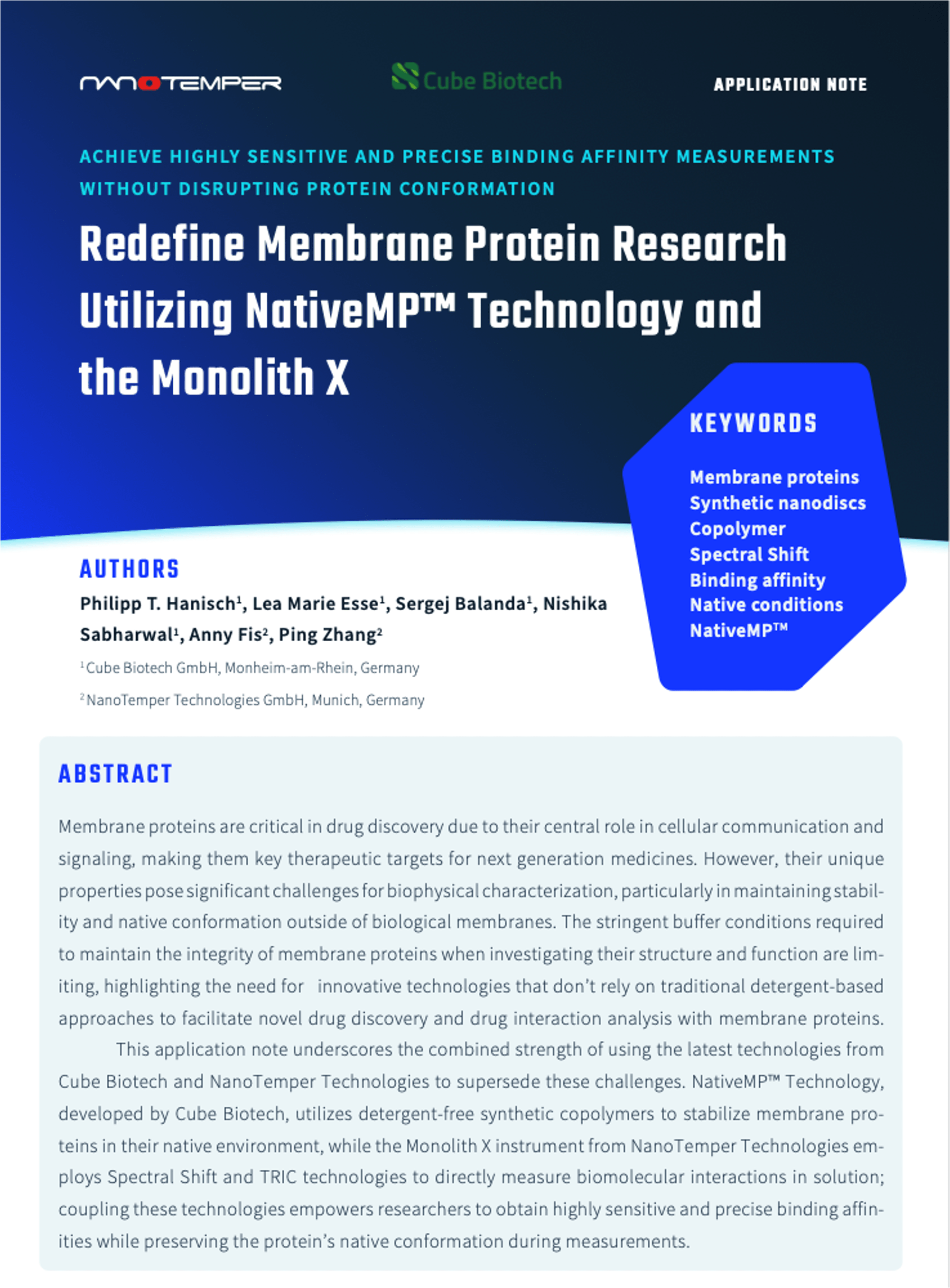
Coronaviruses (CoV) have been responsible for multiple outbreaks this century. The COVID-19 pandemic — caused by the novel SARS-CoV-2 coronavirus — has led to a global health, social, and economic crisis. The COVID-19 emergency exposed the absence of CoV vaccines to prevent infection. It also revealed the urgent need for antiviral drugs to lessen the symptoms and shorten the duration of the disease in those who do get infected.
The absence of a vaccine and antiviral drugs is partly due to a poor understanding of the structural characteristics of the viral proteins that are responsible for viral infection and replication. Groups all over the world are using MicroScale Thermophoresis (MST) to study CoV — including the validation of protein conformation and quantification of molecular interactions. Here are three examples of such studies.
Validation of Nsp15 endonuclease as valuable antiviral target
Nonstructural protein 15 (Nsp15) is an endoribonuclease that plays an essential role in the life cycle of CoV and mediates evasion of host cell recognition by macrophages. To understand more about the structure and function of Nsp15, this group solved the crystal structure of the Nsp15 from MERS-CoV, a coronavirus that causes severe respiratory disease. Using MST, they confirmed that Nsp15 interacts directly with Nsp8 and Nsp8/Nsp7- and does so with low micromolar affinities – and found that this interaction is important for Nsp15 catalytic activity in RNA replication and transcription. This structural and functional evidence reinforced the value of Nsp15 as an important target for antiviral drug discovery. Learn more
Quantifying DNA binding by Nsp9 and dimerization mutants
Nsp9 is an RNA binding protein that is necessary for CoV replication. We know that it must dimerize and bind RNA to be functional. However, we don’t know the mechanisms or regulation of these processes. The authors crystalized wild-type and mutant Nsp9 proteins and did binding studies to identify which portions of the proteins are necessary for dimerization and nucleic acid binding. Since EMSA can only confirm that a binding interaction is taking place, the team turned to MST to quantify the binding affinity between Nsp9 mutants and ssDNA. MST revealed some mutants had weaker affinities for ssDNA compared to the wild type — proving that certain amino acid residues play an important role in Nsp9 binding to ssDNA. Learn more
Confirmation of fusion protein function through measurement of binding affinity
The transmembrane spike glycoprotein S is needed for entry of CoV like mouse hepatitis virus (MHV) into the host cell. It forms a trimer that mediates binding to the host cell receptor and fusion of the viral and host cell membranes. Structural characterization pre- and post-fusion has been technically challenging. Transmembrane protein chimeras are often used for such studies, but an important first step is to make sure the protein is properly folded and functional. To do this, the authors used MST to measure binding between stabilized pre-fusion trimer S from MHV and the soluble host receptor. The binding affinity was in the nanomolar range revealing the metastable pre-fusion architecture of S and highlights key interactions stabilizing it. Learn more
If you do virus research, learn how NanoTemper tools can help.











